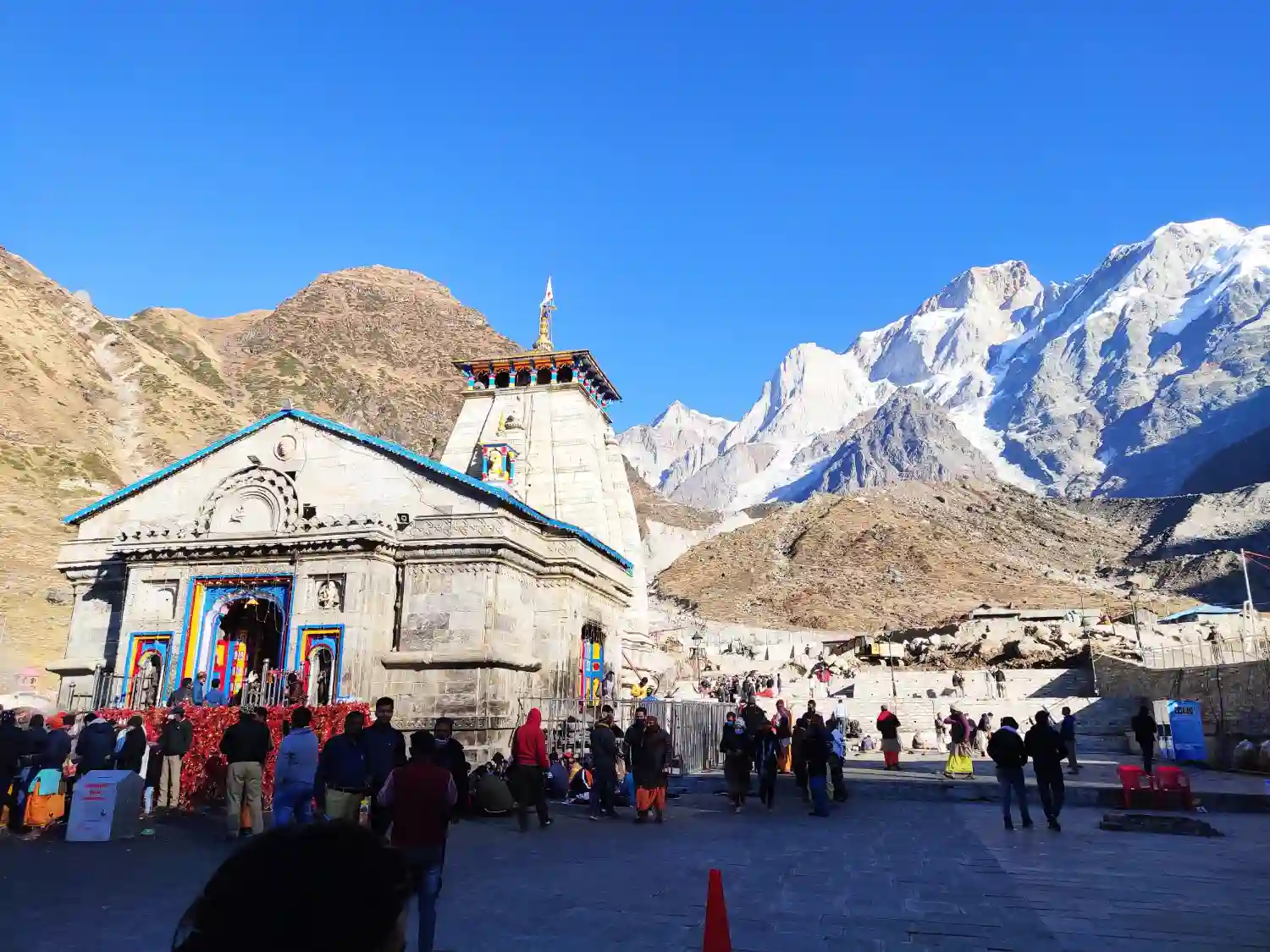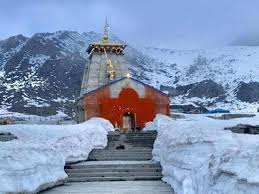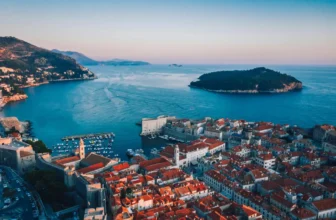
Introduction of Kedarnath: Kedarnath is a town in the Indian state of Uttarakhand. It is situated at 3,583 meters above sea level and is one of the most important pilgrimage sites for Hindus. The town is famous for the Kedarnath Temple, dedicated to Lord Shiva, and is one of the twelve Jyotirlingas in India. People believe that the Pandavas from the Mahabharata epic built the temple. The scenic beauty of the Himalayas also surrounds the town, and it is a popular trekking destination. However, the city was severely affected by floods in 2013, which caused significant damage to the town and the temple. They have rebuilt the city since then and restored the temple.
Importance and Significance Of Kedarnath Temple: The Kedarnath Temple is one of the most important and revered pilgrimage sites for Hindus. They located it in the town of Kedarnath in the Indian state of Uttarakhand and dedicated it to Lord Shiva. Here are some of the reasons why the temple is so significant:
One of the twelve Jyotirlingas: The Kedarnath Temple is one of the twelve Jyotirlingas in India; People believe that these are the most sacred abodes of Lord Shiva.
Ancient history: People believe that the Pandavas from the Mahabharata epic built the temple, and various ancient Hindu texts mention it.
Arduous trek: It sits at an altitude of 3,583 meters, and people consider the walk to the temple difficult, which adds to the devotees’ devotion and dedication.
Salvation: People believe that visiting the Kedarnath Temple can help one attain salvation or Moksha, which is the ultimate goal of Hinduism
Despite the damage caused by the floods in 2013, the temple still holds a special place in the hearts of millions of devotees who visit it every year to seek the blessings of Lord Shiva.
History Of Kedarnath Temple:
The history of the Kedarnath Temple is rooted in Hindu mythology and legends. Here is a summary of the temple’s history:
According to Hindu mythology, the Pandavas from the Mahabharata epic visited the Kedarnath region to seek Lord Shiva’s blessings after the Kurukshetra war. They were seeking forgiveness for the sins they had committed during the war.
Lord Shiva, who did not want to forgive them initially, hid and took the form of a bull. The Pandavas followed him, and when they finally found him, they built the Kedarnath Temple to worship him.

People believe that a Hindu philosopher and theologian, Adi Shankaracharya built the temple around the 8th century AD. He also established India’s four major pilgrimage sites, including Kedarnath.
Over the centuries, the temple has undergone several renovations and repairs, the most recent after the devastating floods that hit the region in 2013.
Today, the Kedarnath Temple stands as one of the most revered pilgrimage sites for Hindus, and millions of devotees visit it every year to seek the blessings of Lord Shiva.
Where Is Located, Kedarnath?
Kedarnath is a revered Hindu pilgrimage site located in the Indian state of Uttarakhand. It is in the Rudraprayag district and the Garhwal Himalayas, near the Mandakini River. Kedarnath is at an altitude of 3,583 meters and is one of India’s four Chota Char Dham pilgrimage sites.
To reach Kedarnath, one can undertake the Kedarnath trek from the town of Gaurikund or take a helicopter ride from Phata, Guptkashi, or Sersi. Kedarnath is well-connected by road to major cities in Uttarakhand and neighboring states. Regular buses and taxis are available from Rishikesh, Haridwar, Dehradun, and other significant towns in Uttarakhand. The nearest railway station to Kedarnath is in Rishikesh, around 216 kilometers away. From Rishikesh, one can take a taxi or bus to reach Gaurikund, the starting point of the Kedarnath trek.
The Flood 2013 In Kedarnath:
The 2013 floods in Kedarnath, located in the Indian state of Uttarakhand, were one of the worst natural disasters the country had ever witnessed. Heavy rainfall caused the flood in June 2013, a cloud burst, and the Chorabari glacier melted into the Mandakini River. The floodwaters rose rapidly and resulted in a catastrophic flash flood, causing extensive damage to the Kedarnath region.
The flood was devastating and claimed the lives of thousands of people, including pilgrims, tourists, and locals. The floodwaters swept away houses, hotels, shops, bridges, and roads, leaving behind a trail of destruction. The Kedarnath Temple, one of India’s most significant Hindu pilgrimage sites, was severely damaged by flood.
They carried out rescue and relief operations. Immediately after the flood, it was challenging due to the remote location of the Kedarnath region. They deployed helicopters and other rescue teams to evacuate the stranded pilgrims and locals. They set up relief camps for food, shelter, and medical aid. However, due to the magnitude of the disaster, rescue and relief operations were slow, and many people were left stranded for days without food, water, or medical attention.
The aftermath of the flood was equally challenging, with a focus on the rehabilitation and reconstruction of the region. The Uttarakhand government and the central government of India pledged financial aid to rebuild the Kedarnath region. However, the rehabilitation process was slow, and the government faced criticism for not doing enough to help the victims.
The flood in Kedarnath was a wake-up call for the country, highlighting the importance of disaster management and preparedness. The government has since improved the infrastructure and preparedness for such disasters. The Kedarnath region has also seen a renewed focus on sustainable development and responsible tourism.
The 2013 flood in Kedarnath was a tragedy that profoundly impacted the region and the country. However, it also taught us the importance of resilience, preparedness, and community participation in adversity. The area continues to recover, and the Kedarnath Temple remains a significant symbol of faith and hopes for millions of pilgrims annually.
The Gateway to the Kedarnath Trek (Starting Point):
The Kedarnath trek is a beautiful and challenging trek in the Indian state of Uttarakhand. It starts from Gaurikund, the last motorable point before the hike. From Gaurikund, the trek is approximately 16 kilometers to Kedarnath, a revered Hindu pilgrimage site.
The trek is of moderate difficulty, with a steep ascent and descent, and can take anywhere between 6-8 hours, depending on the fitness level of the trekker. The trail is well-marked, passing through beautiful landscapes, including dense forests, gurgling streams, and towering mountains.
The trek takes you through the Kedarnath Wildlife Sanctuary, home to various flora and fauna, including the Himalayan black bear, snow leopard, and musk deer. The trek also passes through several small villages where you can witness the local way of life and culture.
The Kedarnath Temple, located at an altitude of 3,583 meters, is the highlight of the trek. The temple is dedicated to Lord Shiva and is one of India’s four Chota Char Dham pilgrimage sites. The temple is a beautiful example of ancient architecture with rich spiritual and historical significance.
The best time to undertake the Kedarnath trek is from May to June and September to November when the weather is pleasant, and the views are clear. However, the hike is closed during the monsoon season, from July to August, due to the risk of landslides and flash floods.
The Kedarnath trek is a must-do for adventure and spiritual enthusiasts. It offers a unique opportunity to witness the natural beauty of the Himalayas and immerse oneself in the rich culture and spirituality of India.
Sonprayag, Gaurikund:
Sonprayag and Gaurikund are two small towns in the Indian state of Uttarakhand. These towns are the starting points for the Kedarnath trek, one of India’s most revered Hindu pilgrimages.
They located Sonprayag at an altitude of 1,892 meters, and it sits at the confluence of the Mandakini and Songanga rivers. It is around 20 kilometers from the town of Rudraprayag and is the last point accessible by vehicles before the trek to Kedarnath. Sonprayag is a small town with hotels and restaurants catering to pilgrims and trekkers.
Gaurikund, located at an altitude of 1,982 meters, is around 5 kilometers from Sonprayag and is the starting point of the Kedarnath trek. They named it after Goddess Parvati, who is also known as Gauri. According to Hindu mythology, People believe that Parvati meditated in Gaurikund to win Lord Shiva’s heart.”The town has a hot water spring, which is said to be infused with medicinal properties and is considered holy by pilgrims.
Gaurikund is a small town with shops and restaurants catering to pilgrims and trekkers. The city also has a helipad for those who wish to take a helicopter ride to Kedarnath.
Sonprayag and Gaurikund are essential towns for the Kedarnath pilgrimage and offer basic amenities to travelers. The villages also serve as gateways to the Kedarnath Wildlife Sanctuary, home to various flora and fauna, including the Himalayan black bear, snow leopard, and musk deer.
Discovering the Beauty and Challenge of the Kedarnath Trek: (endPoint):
Kedarnath Temple is a revered Hindu pilgrimage site located in the Indian state of Uttarakhand. It is situated at an altitude of 3,583 meters and is one of India’s four Chota Char Dham pilgrimage sites.
The Kedarnath Temple marks the end of the Kedarnath trek, which starts from Gaurikund. The hike is approximately 16 kilometers long and takes around 6-8 hours, depending on the fitness level of the trekker.
The temple is dedicated to Lord Shiva and is one of India’s oldest and most significant temples. It is believed to have been built by the Pandavas during the Mahabharata era and has a rich spiritual and historical significance.
The temple is a beautiful example of ancient architecture made of large stone slabs. Artisans adorned the temple’s interior with intricate carvings and sculptures, placing the idol of Lord Shiva in the sanctum sanctorum.
The temple attracts thousands of pilgrims and tourists every year who come to seek the blessings of Lord Shiva and witness the natural beauty of the Himalayas. The temple is open for darshan (worship) from 6:00 AM to 8:00 PM, and pilgrims can also perform special poojas (rituals) for a fee.
The 2013 floods severely damaged the Kedarnath Temple and the surrounding area. But the temple has since been reconstructed and restored to its former glory. The temple remains an important symbol of faith and spirituality for millions and is a must-visit destination for anyone undertaking the Kedarnath trek.
The temperature of Kedarnath:
The temperature in Kedarnath varies throughout the year. During the summer months of May to June, the temperature ranges from 5°C to 18°C, with pleasant and mild weather ideal for trekking and outdoor activities.
During the monsoon season of July to August, the temperature ranges from 10°C to 15°C, with heavy rainfall and an increased risk of landslides and flash floods. The trek to Kedarnath remains closed during this period due to safety concerns.
During the winter months of November to April, the temperature in Kedarnath drops to sub-zero levels, with heavy snowfall and frigid weather. The temple and the trek remain closed during this period due to heavy snowfall and challenging weather conditions.
Experts recommend checking the weather conditions before visiting Kedarnath and packing appropriate clothing accordingly.
How to reach Kedarnath In Small:
Kedarnath is a revered Hindu pilgrimage site in the Indian state of Uttarakhand. It is situated at an altitude of 3,583 meters and is one of India’s four Chota Char Dham pilgrimage sites.
Here are the ways to reach Kedarnath:
By Trek: The most popular and traditional way to reach Kedarnath is by trekking from Gaurikund. Gaurikund is 5 kilometers from Sonprayag, the last motorable point before the trek. The trek is approximately 16 kilometers long and takes about 6-8 hours, depending on the fitness level of the trekker.
By Helicopter: For those who cannot undertake the trek, helicopter services are available from Phata, Guptkashi, and Sersi. The helicopter ride takes around 10-15 minutes and offers stunning views of the Himalayan landscape.
By Road: Kedarnath is well-connected by road to major cities in Uttarakhand and neighboring states. Regular buses and taxis are available from Rishikesh, Haridwar, Dehradun, and other significant towns in Uttarakhand.
By Train: The nearest railway station to Kedarnath is in Rishikesh, which is around 216 kilometers away. From Rishikesh, one can take a taxi or bus to reach Gaurikund, the starting point of the Kedarnath trek.
Kedarnath is a popular pilgrimage site, and thousands of pilgrims and tourists visit the temple annually. The best time to visit Kedarnath is from May to June and September to November when the weather is pleasant, and the views are clear. However, the trek is closed during the monsoon season, from July to August, due to the risk of landslides and flash floods.
If you are driving by your car, follow this route to Kedarnath:-
If you are driving to Kedarnath, here is the recommended route:
Delhi to Haridwar: Take the NH 334 and drive towards Haridwar, around 230 kilometers from Delhi. The drive takes around 5-6 hours, depending on traffic conditions.
Haridwar to Rishikesh: From Haridwar, take NH 7 and drive towards Rishikesh, which is around 25 kilometers away. The drive takes about 45 minutes to an hour.
Rishikesh to Rudraprayag: From Rishikesh, take NH 7 and drive towards Rudraprayag, which is around 140 kilometers away. The drive takes about 5-6 hours, depending on traffic and road conditions.
Guptkashi to Sonprayag: From Guptkashi, take NH 107 and drive towards Sonprayag, which is around 30 kilometers away. The drive takes about 1-2 hours.
Sonprayag to Gaurikund: From Sonprayag, take the local road and drive towards Gaurikund, which is around 5 kilometers away. The drive takes about 15-20 minutes.
From Gaurikund, you can undertake the Kedarnath trek or take a helicopter ride to reach Kedarnath.
While driving to Kedarnath, hiring a local driver who is familiar with the terrain and road conditions is recommended. The road to Kedarnath is steep and winding, and driving can be challenging for those unfamiliar.
Kedarnath Foot Distance (Kedarnath Trek):-
The Kedarnath trek, also known as the Kedarnath on foot, is a beautiful and challenging trek in the Indian state of Uttarakhand. The hike is approximately 16 kilometers long and takes around 6-8 hours, depending on the fitness level of the trekker. Here is a brief overview of the Kedarnath trek:
Starting point: The trek begins from Gaurikund, the last motorable point before the tour. Gaurikund is around 5 kilometers from Sonprayag.
Trail: The trail is well-marked and passes through beautiful landscapes, including dense forests, gurgling streams, and towering mountains. The trek takes you through the Kedarnath Wildlife Sanctuary, home to various flora and fauna, including the Himalayan black bear, snow leopard, and musk deer.
Difficulty: The trek is moderately challenging, with a steep ascent and descent. It can take anywhere between 6-8 hours, depending on the fitness level of the trekker.
Accommodation: There are several basic lodges and campsites along the trek where trekkers can rest and spend the night.
Kedarnath Temple: The Kedarnath Temple, located at an altitude of 3,583 meters, is the highlight of the trek. The temple is dedicated to Lord Shiva and is one of India’s four Chota Char Dham pilgrimage sites. The temple is a beautiful example of ancient architecture with rich spiritual and historical significance.
Best time to trek: The best time to undertake the Kedarnath trek is from May to June and September to November when the weather is pleasant, and the views are clear. However, the hike is closed during the monsoon season, from July to August, due to the risk of landslides and flash floods.
The Kedarnath trek is a must-do for adventure and spiritual enthusiasts. It gives people a unique chance to see the natural beauty of the Himalayas and experience the spirituality and rich culture of India.






